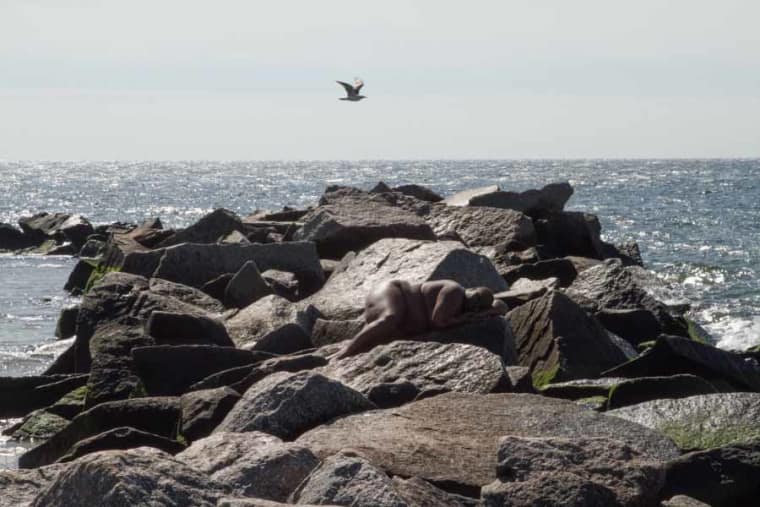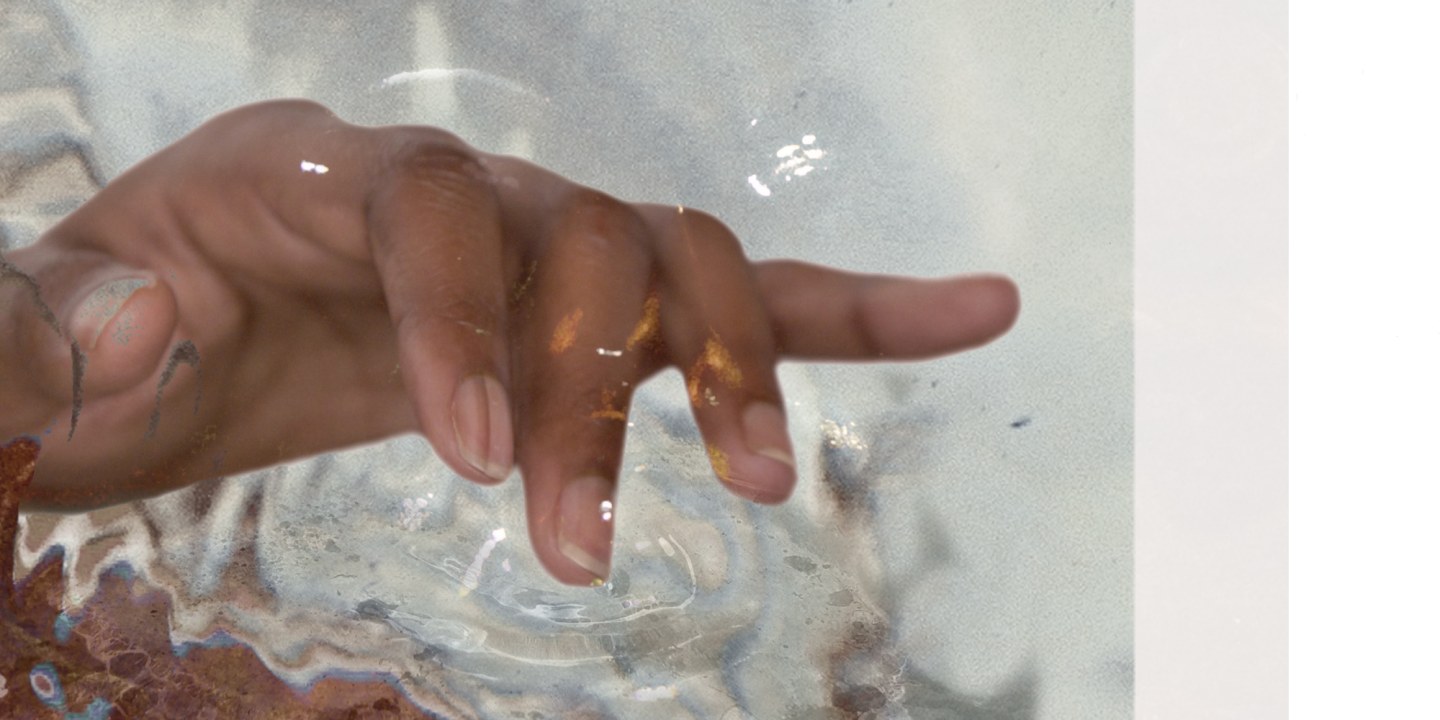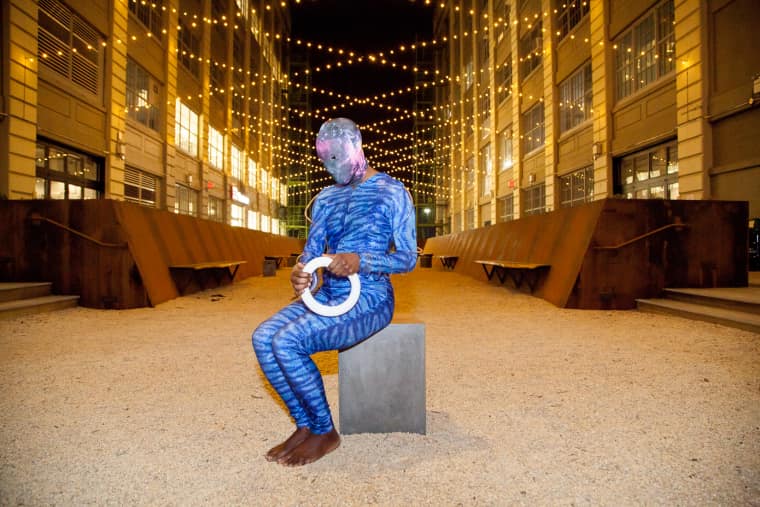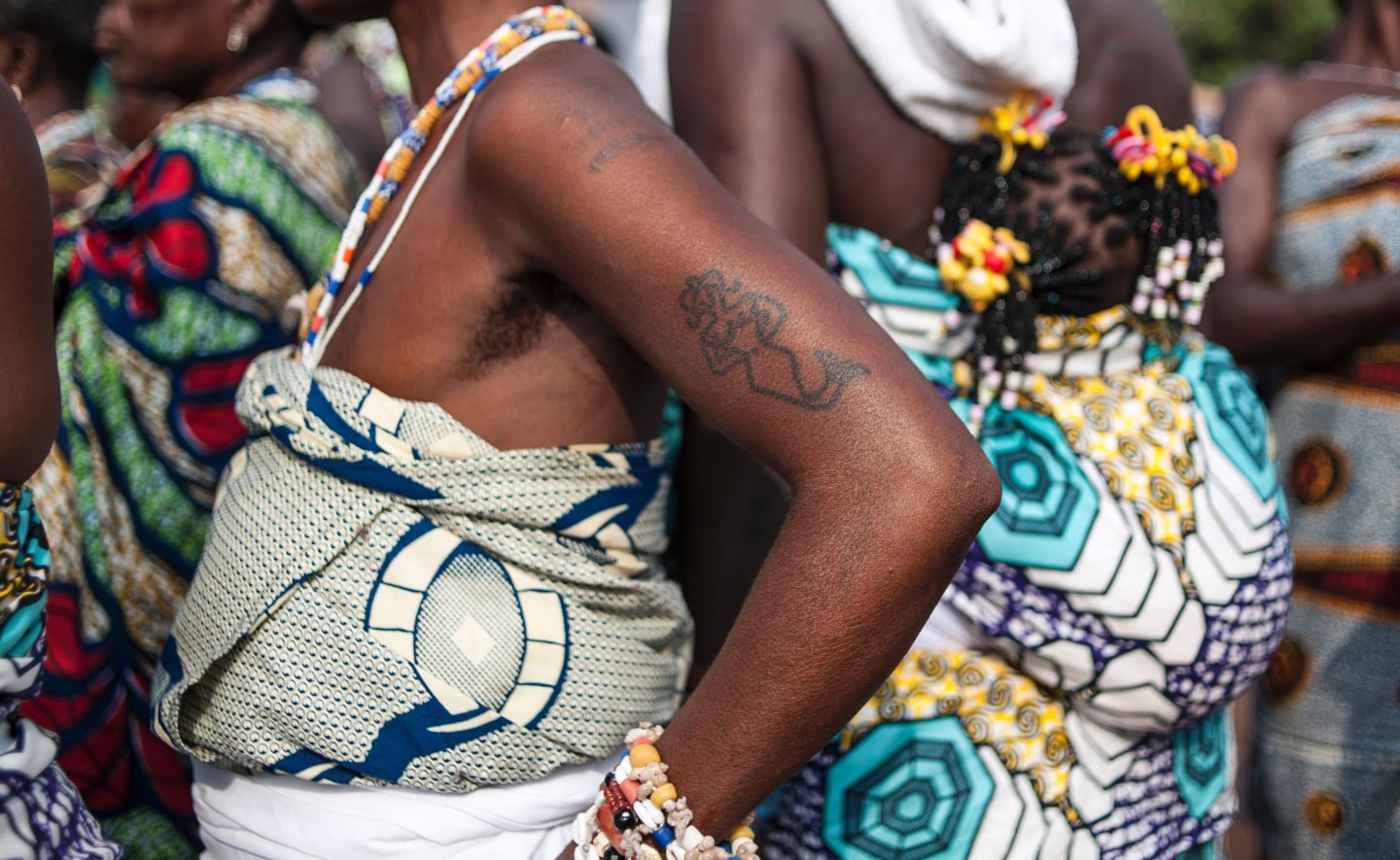I grew up fearing Mami Wata, a mermaid-like deity — half-woman, half-aquatic creature — that is of prominence in many parts of Africa, the Caribbean, Latin America, and other points of the diaspora. For me, as a child in Côte d’Ivoire, she was a looming, powerful figure to be feared. I didn’t know what she looked like, just that she lorded over all bodies of water, that she was all-seeing, and all-powerful. Don’t swim too far out past the shore or Mami Wata will get you, kids were often warned. Don't stay up too late past your bedtime, don't stare at your reflection in the mirror for too long, don’t be greedy at lunchtime. If you misbehave, said the adults, Mami Wata would teach you a lesson. In more recent years, however, I’ve come to learn by meeting new people from different places and with different experiences that she is more than a purveyor of punishment: she can represents thing as varied as love, money, and feminine strength.
Recently, Mami Wata has emerged as a figure of interest to a broader population. For a lot of people, it was likely the allusions to the water goddess in Beyoncé's Lemonade that was their introduction to her. There, she took on a significantly different form: magnetic, wise, independent, even beautiful. That she contains multitudes, it turns out, is one of Mami Wata’s chief qualities.
That thread serves as the basis of MAMI, a group exhibition slated to open at New York’s Knockdown Center later this summer. The show, curated by multidisciplinary New York artists Ali Rosa-Salas and Dyani Douze, will feature pieces by five woman-identified artists — Salome Asega, Nona Faustine, Doreen Garner, Aya Rodriguez-Izumi, and Rodan Tekle — who relate to Mami Wata in different, almost-opposing ways. They will present work that includes a virtual reality bodysuit that recreates the sensation of being immersed in water (by Salome Asega in collaboration with Ayo Okunseinde), and a new media installation that uses immersive technology to tackle online representation (by Rodan Tekle); all the works will be informed by the artists’ connection, or lack thereof, to Mami Wata. Alongside MAMI, Rosa-Salas and Douze are programming a series of connected events, including a marketplace and a lecture.
MAMI is currently running a crowdfunding campaign to raise production costs; find out more about that via Indiegogo. To explore the multiplicity of Mami Wata, we asked the artists and curators to explain their personal relationships to her, as well as how she figures into their work.
 Even The Comfort Of A Stone Would Be A Gain
Courtesy of Nona Faustine
Even The Comfort Of A Stone Would Be A Gain
Courtesy of Nona Faustine
 Like A Pregnant Corpse The Ship Expelled Her Into The Patriarchy
Courtesy of Nona Faustine
Like A Pregnant Corpse The Ship Expelled Her Into The Patriarchy
Courtesy of Nona Faustine
1. Nona Faustine, photographer and visual artist
I’m generally aware of a lot of African gods and goddesses but I did not know about Mami Wata [until recently]. I was naturally drawn to the idea of her because I love going to the beach, the ocean, and the water has always fascinated me. I'm an Aquarius — a water sign — so it felt like a natural connection. I’m still investigating her but I felt a connection to her as a mythological African goddess. It feels like, in our culture, African gods and goddesses are really resurging. I don't think 15 or 20 years ago, you would’ve heard anything about Mami Wata, except in circles of people who worship her. As we here in America are struggling to recontextualize who we are, and as we connect with the diaspora, it’s been a constant investigation. We want to connect ourselves to Africa.
I have a series of images that I took in the fall of 2012 that some people say spiritually represent Mami Wata. That summer was the first summer I really spent at the beach, and it did something to me. It really empowered me; before, I never really wore a bathing suit, I didn’t like showing my body in that way in front of strangers. So when the summer was over, I had conceived a project in Brooklyn along the Atlantic Coast, which had historic significance for me: it’s touching the Atlantic, as in the transatlantic slave trade, and it also had become a familiar landscape to me that summer. So I just did what was natural. When I was printing the images, Deana Lawson, who works at the International Center Of Photography, said, “You made yourself into a goddess.” And that was when I realized what I had created. Somewhere deep inside, I had to have been conjuring that. That's the power of Mami Wata. She was there all along.
 Courtesy of Rodan Tekle
Courtesy of Rodan Tekle
2. Rodan Tekle, digital artist and designer
I’m all about strengthening my lineage to the divinities. I’m also interested in the many different networks of spirit trade that surround Mami Wata specifically. Mami Wata is a spirit that gives a sense of limitless possibilities: a complex transformative force, radically plural, a breeding ground for radical imagination. The meanings and significances about Mami Wata are just as complex and fluid as Mami Wata is.
I’m interested in the notion of Mami Wata as healing but also how she is described by some as the “capitalist deity.” She seems to have manifested out of a necessity to deal with Africa’s forced integration into a capitalist system. It’s been said that Mami Wata is a manifestation of centuries-old African religious traditions retooled for contemporary times. That’s always super relevant to me: how to re-tool for change and the process of change. I mean, we are always re-tooling ideally, but how much do you have to work within the system versus outside it? And how do you do that in a healing, sexy-mama Mami Wata type of way? Basically, it’s interesting to think about what gets lost and what gets embraced in the context of a transition into a post-capitalist global community.
 Courtesy of Doreen Garner
Courtesy of Doreen Garner
 Courtesy of Doreen Garner
Courtesy of Doreen Garner
3. Doreen Garner, artist
When I was younger I had a mermaid. Little Miss Singing Mermaid was great in the tub. A distraction from soap, shampoo and the likelihood that my little sister was pissing up our collective bathwater. She was black and oddly enough had straight hair underwater — #hairsorcery. Her tail was blinged out and changed color as soon as she hit warm water. The amazing part about her is that she could sing underwater. But when her batteries ran out, so did my interest. I moved on to regular ol' Barbies because they were more "real." Little Miss Singing Mermaid could never represent me. She was a construction, a fantasy. I don't have a connection with Mami Wata. I feel that the presence of Mami Wata as "goddess" or spirit being is a distraction from very real black women that are powerful, selfless, and confident. We as black women are often characterized and portrayed only for the use of entertainment and sex in white dominated societies. Mami Wata plays into that stereotype of being manipulative eye candy, thirsty for followers and dick. Many find empowerment in her image but like Little Miss Singing Mermaid, she's dismissible to a truthseeker such as myself.
 Darnell Scott / Courtesy of Aya Rodriguez-Izumi
Darnell Scott / Courtesy of Aya Rodriguez-Izumi
4. Aya Rodriguez-Izumi, artist and sculptor
I had heard of Mami Wata before, but with this project I really started doing some research. And the elements that I think connect to my work are these ideas of ritual, sacrifice, and giving some kind of offering. Shrines and worship have a lot of connection to my work. Mami Wata is an oracle, or this entity that gives different powers, or wealth, or love to the people that come to her. I'm half-Japanese and half-Puerto Rican and Cuban, so my parents both practiced different religions. My dad is a part of a religion called Yoruba and my mom practices Shintoism, so I pull a lot of ideas from those two cultures. Japan is a very monotheistic society; a lot of people practice the same religion. Even though I'm half-Japanese, many people considered me as being "other" because I wasn't full Japanese. That was something I tried to fight against, but now I feel this idea of being a "cultural other" is something that is really important to my work. I think it's something that a lot of people have experienced, even if they don't consider it in that kind of sense. You can see it Mami Wata, too, the multiplicity and hybridity.
 Derek Schultz/ Courtesy of the Iyapo Repository by Salome Asega & Ayodamola Okunseinde
Derek Schultz/ Courtesy of the Iyapo Repository by Salome Asega & Ayodamola Okunseinde
 Derek Schultz/ Courtesy of the Iyapo Repository by Salome Asega & Ayodamola Okunseinde
Derek Schultz/ Courtesy of the Iyapo Repository by Salome Asega & Ayodamola Okunseinde
5. Salome Asega, artist and researcher
[MAMI curators] Ali and Dyani first introduced me to some texts about Mami Wata while we were participating in a residency with AUNTS. I think I was immediately drawn to her because I am named after another seductive and dangerous woman. I am drawn to fact that her presence is indeterminable. It can be both affirmative and unfavorable. I've also been doing some research around Orisha mounting and if the process is comparable to virtual reality. With Mami Wata, she takes you to another realm — an underwater paradise in the spirit world.
Multiplicity is lit. Most of my projects involve a participatory element so finding points of consensus and dissensus are what interest me because it complicates the work. These points make the work more democratic. Even though I went to design school, I'm never trying to offer solutions or answers. I'm just trying to ask more questions. And because I'm coding interactions, I have to consider the multiple ways people can engage with an interactive piece. It's an iterative process that involves a constant back-and-forth between speculating the possibilities and actually testing projects with people. I love returning to the beta versions of projects to have that smh moment. Like, how did I think that could work?
“Mami Wata, like water itself, is both revered and feared, and most importantly, cannot be easily contained.”—Ali Rosa-Salas, MAMI curator
6. Ali Rosa-Salas, MAMI curator
I first learned about Mami Wata’s global influence while in residency last year at Mount Tremper Arts with Dyani and MAMI exhibiting artist Salome Asega. We collaborated on a video installation Dyani had started prior to the residency that examined women of African descent and our relationships to water. In the midst of our research on topics ranging from the transatlantic slave trade to water drumming, we discovered Mami Wata, a pantheon of water deities originating from West and Central African matriarchal spiritual systems. They are worshipped by those seeking material wealth, fertility, and the fulfillment sexual desire, while also associated with impotence, fidelity, drought, among many other seemingly contradictory significations. Mami Wata's dual nature resonated deeply with each of us and our lived experiences as woman-identified people of color at the intersections of many subjectivities and politicized identities. Here we are, a year later, still ruminating about these ideas.
I feel like so much of my experience as a woman of African descent living in the United States has been about mapping my origin story. As Nuyorican, I'm neither 100% Boricua, nor do I wholly identify as a proud U.S. American. My queerness has also placed my gender identity under scrutiny by a society that demands I “come out” as something. These challenges to my authenticity used to make me feel like an imposter in my own body. Mami Wata, like water itself, is both revered and feared, and most importantly, cannot be easily contained. Mami Wata's mystifying multiplicity has instilled in me that liminality is a liberating state of being.
 Mami Wata tattoo seen in Ouida, Benin.
Getty Images / Stephan Huinis
Mami Wata tattoo seen in Ouida, Benin.
Getty Images / Stephan Huinis
7. Dyani Douze, MAMI curator
The image of Mami Wata was a staple of my childhood, before I even knew who Mami Wata was. My uncle made a painting of her and gave it to my mom as a gift before I was born. They were represented as a part-woman/part-aquatic creature with huge breasts, painted on four panels that made up our kitchen cupboards. Every time we moved, the painting came with us. As a child, I was captivated by the portrait because the subject was so unapologetically seductive and vulnerable. Little did I know that years later, Mami Wata would continue to be an inspiration. As a queer, mixed (Haitian/white/Zimbabwean), Pisces, woman-identified person who moved around a lot as a kid, I've always felt like I never really had a place to call home. My home has always been defined by the close relationships I had with the women in my life, namely my mom and my sister and, of course, that Mami Wata painting. As I get older, the many identities that I've been exploring have transformed from burdens into blessings.
Mami Wata has concrete historical origins that are too often mythologized as "black magic," or pejoratively referred to as "voodoo." What I have learned through research on water deities like Mami Wata and Haitian Vodou is that fluidity is a spiritual philosophy. MAMI is about dissolving boundaries, creating bountiful and affirming spaces for survival, collective healing for ourselves, and by extension, this "art world" we are entangled within, whose structure seriously needs to be dismantled.